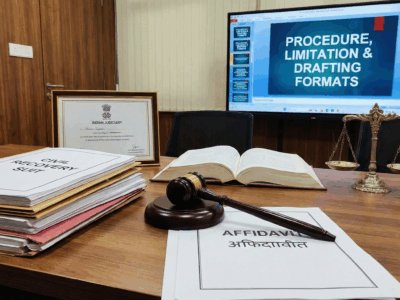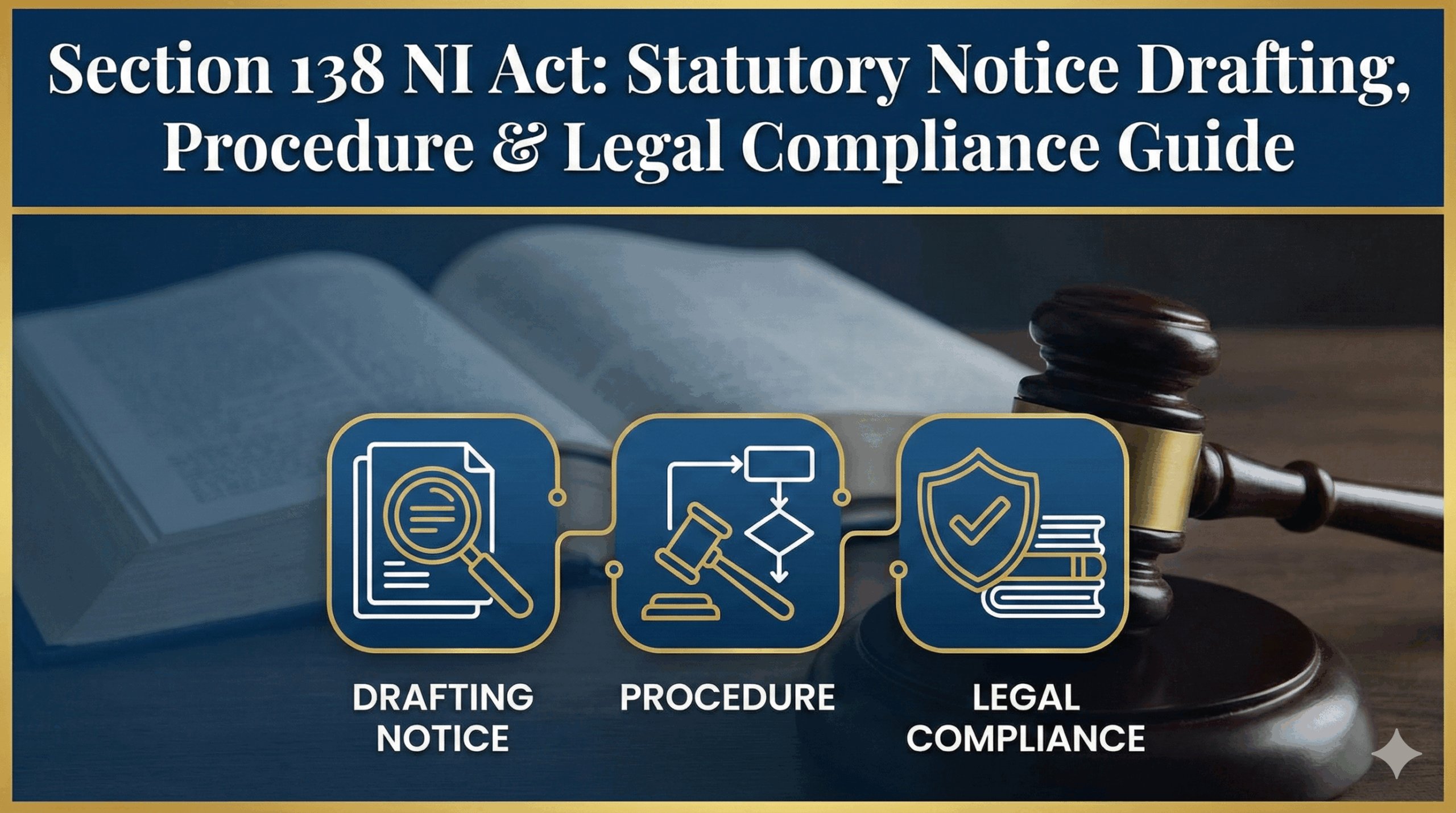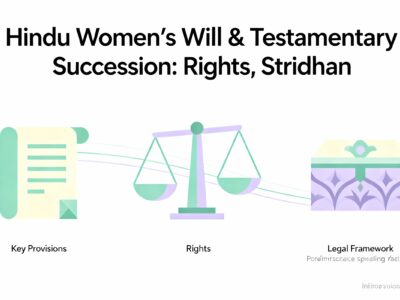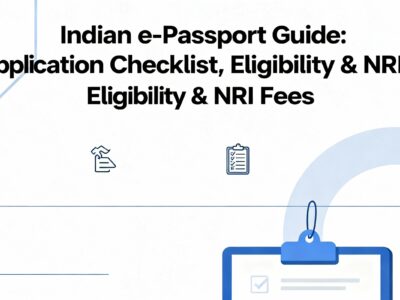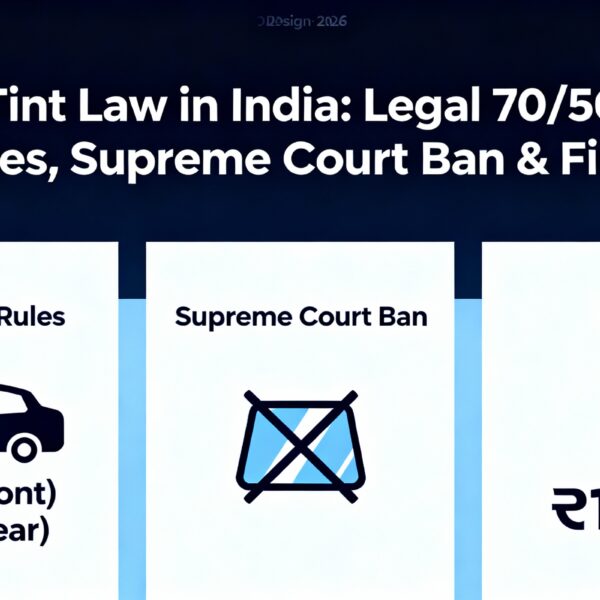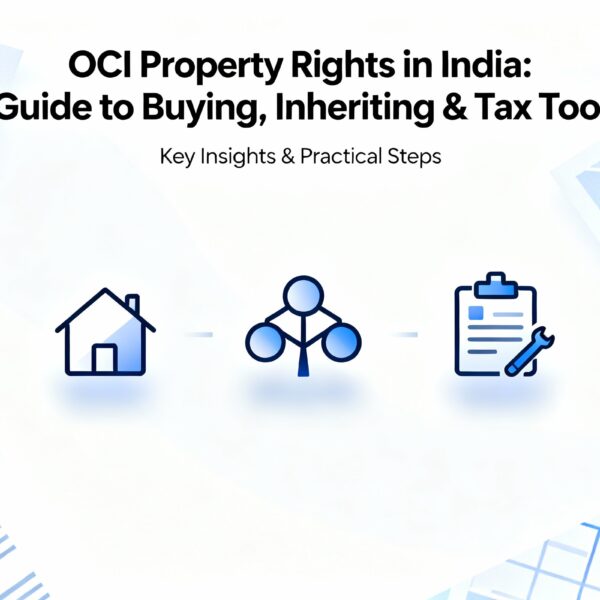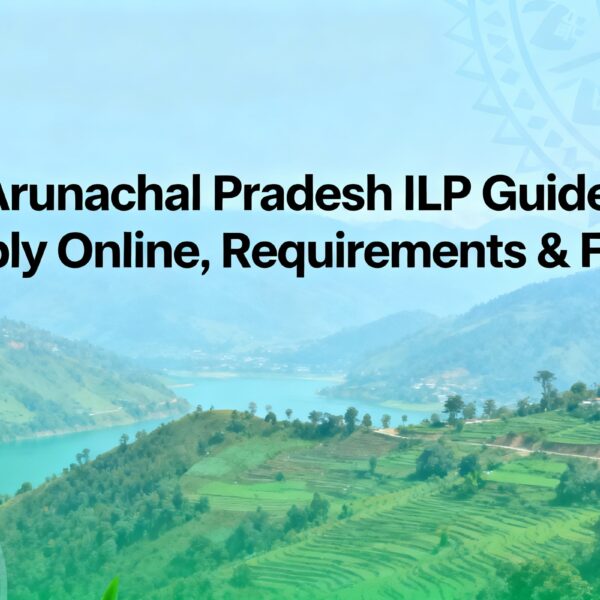India’s Hit-and-Run Law: A Complete Victim’s Guide | Legal Format
The legal landscape for hit-and-run incidents in India has fundamentally changed with the introduction of the Bharatiya Nyaya Sanhita (BNS). This guide serves as a comprehensive resource for victims, families, and witnesses navigating the aftermath of an accident. From understanding the stringent penalties under the new law to filing an FIR, securing compensation through the Motor Accident Claims Tribunal (MACT), and leveraging crucial medical evidence, we provide the actionable steps and legal knowledge you need to secure justice.
India's New Hit-and-Run Law: A Victim's Guide
A comprehensive resource for victims, families, and witnesses navigating the legal aftermath of a hit-and-run incident under the new Bharatiya Nyaya Sanhita (BNS) and the Motor Vehicles Act.
Part I: Understanding the Legal Landscape
In 2024, India replaced the Indian Penal Code (IPC), 1860, with the Bharatiya Nyaya Sanhita (BNS), 2023. This brought a significant change to how hit-and-run cases are handled, introducing a specific, more stringent provision to address incidents where a driver flees the scene without reporting.
Old Law vs. New Law
| Aspect | Under IPC (Old Law) | Under BNS (New Law) |
|---|---|---|
| Relevant Section | Sec 304A (Causing death by negligence) | Sec 106(2) (Specific Hit-and-Run) |
| Maximum Jail Time | 2 years | 10 years |
| Fine | At court's discretion | Mandatory Fine |
Important Distinction: The severe 10-year penalty under Section 106(2) of the BNS applies only if the driver flees the scene and fails to report the incident to a police officer or magistrate. If the driver reports the incident, they may be charged under Section 106(1) for causing death by negligence, which carries a lesser penalty of up to 5 years.
The Motor Vehicles Act, 1988: The Civil Counterpart
While the Bharatiya Nyaya Sanhita (BNS) dictates the criminal punishment for the driver, the Motor Vehicles Act (MVA) governs the compensation for the victim. These two laws run in parallel.
Section 134, MVA
Mandates a driver's duty to secure medical assistance for the injured and report the incident to the police. Failure to do so is a punishable offence.
Section 187, MVA
Specifically punishes driving-related offences where the driver fails to provide required information, which is central to a hit-and-run.
Part II: Critical First Steps for Victims & Witnesses
The "Golden Hour": Your Immediate Priorities
1. Prioritize Medical Help
Immediately call an ambulance (102/108) or transport the injured to the nearest hospital. The Supreme Court protects good samaritans from legal harassment.
2. Inform the Police
Call the police emergency line (112 or 100). A prompt report (First Information Report - FIR) is crucial for the legal process to begin.
3. Document Everything
If possible, take photos of the scene. Note down the fleeing vehicle's number, color, make, and model. Gather contact details of witnesses.
Your Evidence Gathering Checklist
📸 Photographic Evidence
- Vehicle's position on the road
- Skid marks and debris
- Damage to all vehicles involved
- Visible injuries (if possible)
- Wider shots of the entire scene
- Nearby landmarks or street signs
📝 Information to Note
- Exact time and date
- Weather and road conditions
- Description of the fleeing driver
- Direction the vehicle fled
- Contact details of witnesses
- Responding police officers' names
🗣 Witness Interaction
- Politely ask for their name & number
- Ask what they saw, in their own words
- Do not suggest details; let them recall
- Ask if they are willing to give a police statement
- Inquire if they have photos/videos
Your Rights at the Police Station
Interacting with the police can be intimidating, but knowing your rights is crucial. The police are legally obligated to assist you.
- Mandatory FIR: For a "cognizable offence" like a hit-and-run, the police must register an FIR. A refusal can be escalated to a senior officer (like the Superintendent of Police) or a local magistrate.
- Zero FIR: If you are outside the jurisdiction of the police station where the accident occurred, you can file a "Zero FIR" at any police station. They will register it and transfer it to the appropriate station.
- Free Copy: You are entitled to a free copy of the FIR. This document is essential for all legal and insurance proceedings.
Part III: Securing Financial Compensation
The legal system provides two primary pathways for compensation, depending on one critical factor: whether the offending vehicle is identified.
Pathway 1: Vehicle Remains Unidentified
The Hit-and-Run Compensation Scheme, 2022
This government scheme provides fixed, no-fault compensation to victims when the offending vehicle cannot be traced. The claim is processed through the local Sub-Divisional Officer (SDO).
₹2,00,000
In case of death.
₹50,000
In case of grievous injury.
Pathway 2: Vehicle is Identified
Claim before the Motor Accident Claims Tribunal (MACT)
If the vehicle is identified, victims can claim "just compensation" from the vehicle's third-party insurance. This amount is not fixed and is based on the actual loss suffered by the victim and their family. The case is heard in a special court called the MACT.
How is "Just Compensation" Calculated?
The MACT uses a multiplier method based on several factors to arrive at a fair amount:
- ✔ Loss of Dependency: Victim's income and age determine a multiplier for future lost earnings.
- ✔ Medical Expenses: All bills from hospitalization, treatment, and future medical needs.
- ✔ Pain and Suffering: Compensation for the physical and mental trauma endured.
- ✔ Loss of Consortium: For the loss of companionship, care, and affection suffered by family members.
- ✔ Funeral Expenses: In case of death.
Part IV: The Driver's Criminal Liability
While you pursue compensation, the state separately prosecutes the driver for the crime. The police investigation, which results in a 'Charge Sheet', forms the basis of this criminal case. Your role here is often that of a key witness.
Rash & Negligent Act
The prosecution must prove the driver was acting rashly (recklessly) or negligently (without due care).
Failure to Report
The core of the hit-and-run charge is the act of fleeing and not reporting the incident to authorities.
Witness Testimony
Eyewitness accounts identifying the driver and describing the event are powerful evidence in court.
Common Defences an Accused Driver Might Use
To prepare for an MACT case, it's helpful to understand the arguments the driver's side might present. This allows you and your lawyer to build a stronger case with counter-evidence.
- Mistaken Identity: Arguing their vehicle was not the one involved. This is where your evidence (photos, witness accounts, CCTV) is vital.
- Contributory Negligence: Claiming the victim was also partially at fault (e.g., jaywalking, not wearing a helmet). This can sometimes lead to a reduction in the compensation amount.
- Inevitable Accident: A rare defence claiming the accident was unavoidable due to unforeseen circumstances (e.g., sudden mechanical failure, a medical emergency).
Part V: The Critical Role of Third-Party Insurance
Why Insurance is Your Real Opponent
In an MACT case, you are not typically fighting the driver directly for money. You are claiming against their mandatory third-party insurance policy. The insurance company's lawyers will represent the driver's interests in court.
Their goal is often to minimize the payout by challenging the evidence of negligence, the extent of injuries, or the calculation of lost income.
Key Insurance Points
Mandatory by Law
Every vehicle on Indian roads must have third-party insurance to cover injury or death to others.
The "Pay and Recover" Principle
If the driver violated their policy (e.g., no valid license, drunk driving), the insurer must still pay the victim first, and can later sue the driver to recover that amount.
Uninsured Vehicle?
If the vehicle is uninsured, the claim is filed against the driver and owner directly, which can make recovery of the compensation amount more difficult.
Part VI: Technology as a Tool for Justice
In the digital age, technology plays a pivotal role in solving hit-and-run cases that were once considered "blind". The minutes and hours after an incident are a race against time to secure digital evidence before it's erased.
Dashcam Footage
A driver's own dashcam, or one from a nearby vehicle, can provide indisputable evidence of the incident and the fleeing vehicle's license plate.
CCTV Networks
Police and victims' families often trace a vehicle's escape route by collecting footage from traffic signals, private businesses, and residential cameras.
Social Media & Public Appeals
When a partial license plate or vehicle description is known, public appeals on social media can sometimes help locate the vehicle or driver.
Part VII: Frequently Asked Questions
What if I was partially at fault for the accident?
This is called "contributory negligence." The MACT may still award you compensation, but the amount could be reduced based on the percentage of fault assigned to you. For example, if you are found to be 20% at fault, your final compensation might be reduced by 20%.
Is there a time limit to file a compensation claim?
Following a Supreme Court ruling and amendments to the MVA, there is no specified limitation period for filing a claim petition with the MACT. However, it is always best to file as soon as possible, as long delays can make it harder to produce evidence and prove your case.
What's the difference between the criminal case and the compensation case?
They are two separate legal proceedings. The criminal case (under the BNS) is prosecuted by the state (police) to punish the driver with fines or jail time. The compensation case (under the MVA) is filed by you (the victim) to receive financial compensation for your losses. The outcome of one does not legally determine the outcome of the other, though the evidence (like the police charge sheet) is used in both.
Do I have to pay court fees for an MACT claim?
Court fees for MACT cases are typically very low or, in many states, completely waived for accident victims to ensure justice is accessible. You should confirm the specific rules with your local District Legal Services Authority (DLSA).
Part VIII: The Victim's Journey - A Legal Timeline
1
The Incident (Day 0)
Accident occurs. Immediate actions: call for medical help, gather initial evidence, and note vehicle details if possible.
2
Reporting (Day 1-2)
File FIR at the police station. Victim undergoes medical examination at a government hospital to create the Medico-Legal Case (MLC) report.
3
Investigation (Weeks to Months)
Police investigate the case, collect CCTV footage, and trace the vehicle. If successful, a Charge Sheet is filed in court against the driver.
4
Filing Claim
If offender is unidentified, apply for the Hit-and-Run Scheme. If identified, file a detailed claim petition in the Motor Accident Claims Tribunal (MACT) through a lawyer.
5
MACT Proceedings (Months to Years)
The tribunal hears evidence from both the victim and the insurance company. Witnesses may be called to testify. This is the longest phase.
6
Award & Appeal
MACT issues its final decision, known as an "award," detailing the compensation amount. If either party is unsatisfied, they can appeal to the High Court.
Part IX: The Medico-Legal Pillar - Hospitals & Medical Evidence
Medical records are the undisputed foundation of any personal injury claim. They provide an objective, scientific account of the harm suffered, making them one of the most powerful pieces of evidence you can present to the MACT.
The Medico-Legal Case (MLC) Report
This is the first and most crucial medical document, prepared by a doctor at a government hospital. It legally establishes that the injuries were the result of an accident.
- Establishes a direct link between the accident and the injury.
- Classifies injuries (e.g., "simple," "grievous"). This classification has a major impact on compensation.
- Can note if the patient smelled of alcohol, which is relevant for contributory negligence.
Building Your Medical File
Meticulously preserve every single piece of paper related to medical treatment. This file is essential for proving your expenses to the MACT.
- Hospital Bills: Admission, bed charges, ICU, OT.
- Pharmacy Receipts: All medicines purchased.
- Diagnostic Reports: X-rays, MRIs, blood tests.
- Doctor's Prescriptions & Consultation Fees.
- Disability Certificate: If applicable, from a certified medical board, this is critical for claims of future lost earnings.
Part X: Anatomy of a Medico-Legal Case (MLC) Report
To better understand the cornerstone of your medical evidence, here is a simplified template illustrating the key components of a Medico-Legal Case (MLC) report. While the exact format may vary between hospitals, these are the essential fields a doctor will fill out. This document officially records the nature and extent of your injuries for the court.
Medico-Legal Report (MLC) - Sample Template
[For Informational Purposes Only]
Hospital Name:
District General Hospital, Kolkata
MLC No.:
12345/2025
Date & Time of Examination:
28/09/2025, 08:00 AM
1. Patient Details
Name: [Patient's Name]
Age: [e.g., 35 Years]
Sex: [Male/Female/Other]
Address: [Patient's Full Address]
Identification Marks: [e.g., A mole on the right cheek]
2. Incident Information
Brought By: PC Ram Singh, Buckle No. 987, Taltala Police Station
Alleged History of Injury:
"Alleged history of road traffic accident at around 7:30 AM on 28/09/2025 near Sealdah flyover, hit by an unknown vehicle which fled the scene."
3. Findings on Examination
General Condition: Patient is conscious and oriented. Pulse: 88/min, BP: 120/80 mmHg. Smell of alcohol: No.
| Injury No. | Type of Injury | Location | Size |
|---|---|---|---|
| 1. | Lacerated Wound (deep cut) | Left forehead | 4 cm x 1 cm |
| 2. | Abrasion (graze) | Right forearm and knee | Multiple, varying sizes |
| 3. | Bruise | Left shoulder | 5 cm x 5 cm |
4. Final Opinion
- The above-mentioned injuries are grievous in nature (due to fracture noted on X-ray of forearm, not listed above).
- All injuries are fresh and appear to be caused by a blunt force impact, consistent with a road traffic accident.
- Approximate time since injury is within 2-4 hours.
[Signature]
Dr. [Doctor's Name]
Reg. No: [Medical Council Reg. No.]
Duty Medical Officer, District General Hospital
Part XI: The Road After the Verdict - The Appeals Process
The MACT's decision, or "award," is not always the final word. If you believe the compensation is inadequate, or if the insurance company believes it is too high, either party has the right to appeal to a higher court. This adds another layer to the legal journey, requiring patience and expert legal guidance.
Grounds for Appeal by the Victim
- Inadequate compensation amount.
- Incorrect calculation of future income loss.
- Failure to consider certain medical expenses.
- Unfairly high percentage of contributory negligence assigned.
Grounds for Appeal by the Insurer
- Finding of negligence against their driver was wrong.
- Victim's claims of injury or income are fraudulent or exaggerated.
- Breach of policy conditions by the driver (e.g., no valid license).
- The compensation awarded is excessively high.
The Appellate Path & Statutory Deposit
Appeals from the MACT are filed in the High Court of the respective state. A crucial point for insurers is that under Section 173 of the Motor Vehicles Act, they must deposit a significant portion of the awarded compensation amount (e.g., ₹25,000 or 50% of the award, whichever is less) with the court before their appeal can even be heard. This ensures that appeals are not filed frivolously and provides some relief to the victim, who may be able to withdraw this deposit amount pending the final appeal hearing.
Part XII: Beyond the Courtroom - Psychological Support & Advocacy
The aftermath of a hit-and-run extends far beyond physical injuries and legal battles. The psychological trauma—including anxiety, depression, PTSD, and fear of using the roads—can be debilitating for both victims and their families. Acknowledging and addressing this invisible wound is a critical part of the recovery process.
Seeking Mental Health Support
Professional help can provide coping mechanisms and a safe space to process trauma. Don't hesitate to reach out.
- ✔ Recognize the Symptoms: Flashbacks, nightmares, social withdrawal, and persistent anxiety are signs you may need support.
- ✔ Consult a Professional: A psychiatrist or psychologist can provide therapy and treatment. Costs for this can sometimes be included in MACT claims as part of medical expenses.
- ✔ National Helpline: The Government of India's KIRAN helpline (1800-599-0019) offers free mental health support.
Disclaimer: This information is not a substitute for professional medical advice.
Becoming a Road Safety Advocate
Transforming a personal tragedy into a force for positive change can be an empowering part of healing. You can contribute to making roads safer for everyone.
- ✔ Join Advocacy Groups: Organizations like the SaveLIFE Foundation work on policy change and improving emergency response.
- ✔ Promote Awareness: Share your story (if you are comfortable) to highlight the human cost of reckless driving.
- ✔ Report Road Hazards: Use local municipal apps or social media to report potholes, non-functional streetlights, and poor road design.
Part XIII: Access to Justice & Legal Aid in West Bengal
Navigating the legal system can be daunting and expensive. The Legal Services Authorities Act provides free legal aid to eligible individuals, including women, children, and those with limited income. You can approach your local District Legal Services Authority (DLSA) for assistance.
| District | Contact Person & Designation | Contact Number |
|---|
The Road to Justice is a Marathon, Not a Sprint
The journey after a hit-and-run is challenging, but you are not alone. The law provides clear pathways for both justice and compensation. By staying informed, acting promptly, and seeking the right legal support, you can navigate this difficult time effectively. We hope this guide serves as a valuable first step in your journey.

